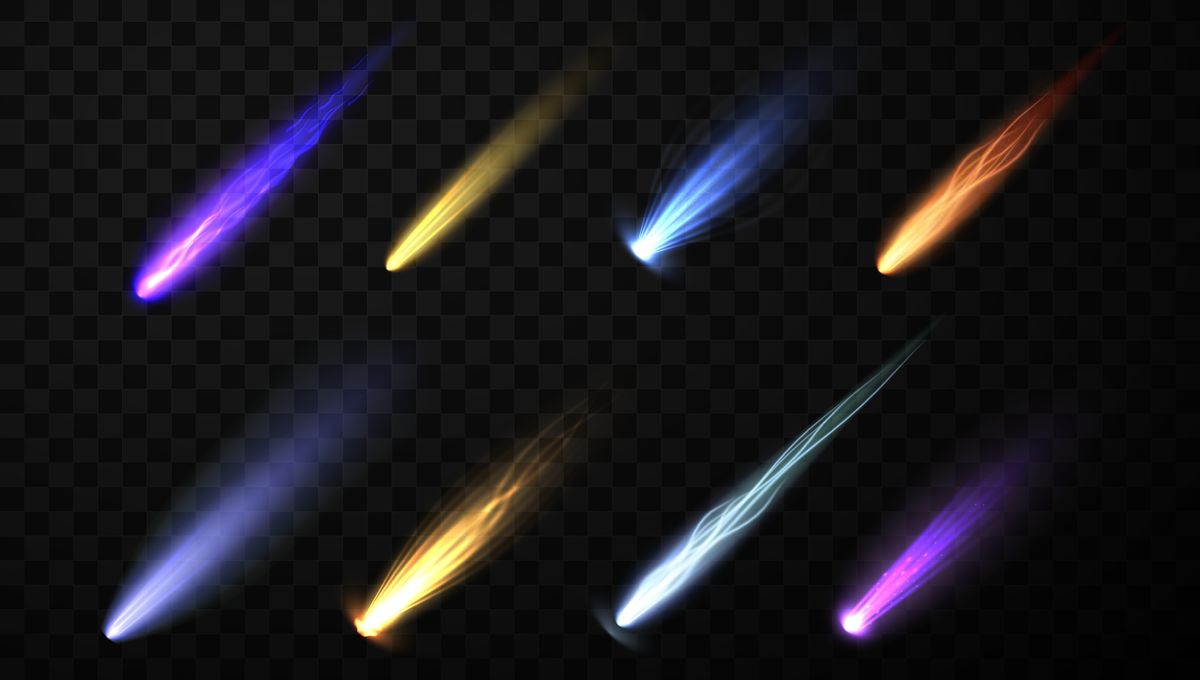
Seeing a meteor is always an exciting experience, partly because each one is different. Faint “shooting stars” seldom have an identifiable shade – but seeing a deeply colored flash adds something extra to the good fortune of seeing a meteor that can compete with the brightest stars.
If you are lucky enough to experience a meteor shower (or better still, a storm) the contrasting colors can take things to an extra level. Meanwhile, for researchers, the color can indicate the chemistry of the dust that made the event, which can be significant when we know its origins.
Meteors are caused by dust particles, and sometimes something larger, burning up in the Earth’s atmosphere. The extreme speeds with which they hit create a lot of friction, which heats the incoming object to the point where it releases light that seems out of all proportion to the tiny amount of material involved.
If you toss a chemical sample in a fire (please use proper safety precautions, and don’t blame us for the consequences if you don’t) the burst of light will have a distinctive color. This is the basis of the flame test, invented by Robert Bunsen, of Bunsen burner fame. Electrons supplied with enough energy jump to a higher state. When they drop back, they release light at a wavelength specific to that element, which we see as a specific color.
Detection of that wavelength can reveal an element’s presence in any sufficiently hot environment, be it a laboratory flame, a star, or a meteor.
The same process allows us to make fireworks in many colors. The particles that produce meteors are seldom pure, but if one element dominates, it can produce a distinct shade.
Meteorites are just meteors that were large enough to make it to the ground without burning up entirely. The most common elements in meteorites are silicon, oxygen, and iron.
Their smaller counterparts have similar composition, with the iron giving many a yellow glow. Sodium, which produces an orange-yellow glow that can be hard to distinguish from iron unless it is bright or long, also sometimes contributes.
The colors don’t always match those commonly reported from flame tests, however. For example, calcium in a Bunsen burner gives an orange-red light. However, according to NASA, the presence of calcium in a meteor is signaled by a violet tinge. The difference is because the calcium in meteors is ionized Ca+. Similarly, magnesium in a meteor creates a blue-green shade, different from the white seen when magnesium metal burns. In a lab, iron can produce a gold color when it is Fe2+ or be orange-brown when Fe3+. The orange-yellow association with iron indicates which is more common in space.
Not all the colors come from the doomed space dust, however. The friction heats the air around the meteor as well as the object itself. The atmosphere is mostly nitrogen and oxygen, both of which glow red when heated.
Since the atmosphere doesn’t change much, we might expect all meteors to have a predominantly red shade, but that is not the case. In faster meteors, the color produced by the heated space dust tends to dominate, whereas when the meteor is slower we’re more likely to see the atmospheric red.
The meteor’s velocity, in turn, depends on the direction it was previously traveling relative to the Earth. An object whose orbit causes a head-on collision will produce a much faster flash than one that is traveling in the same general direction as the planet, only to be overtaken.
Brighter meteors, known as fireballs, often leave a glow behind them. Initially, this is usually green, caused by neutral oxygen atoms from the air, not the incoming object. Subsequently, however, an afterglow may be seen that has the color of the main metals left behind after the meteors’ passage.
Some bright meteors can produce persistent trains, which can last up to 30 minutes in extreme cases. These are created by interactions of sodium or iron oxide from the meteor with oxygen and ozone in the air.
If a random meteor has a particular shade, it might be interesting to an observer to know what it was rich in, but the scientific value is small. However, during a meteor shower, almost all the meteors apparently coming from the right area of the sky are the products of a passing comet. In most cases, we have managed to match the shower to the comet – for example, October’s Orionids are from Halley’s Comet.
The Geminids, for example, are known as not only one of the brighter meteor showers of the year, but having a distinctly greenish-blue color, as a result of their nickel and magnesium content.
Consequently, by studying the colors of a selection of meteors from the same shower, we can learn about the chemistry of the comet without needing to send a spacecraft.
All “explainer” articles are confirmed by fact checkers to be correct at time of publishing. Text, images, and links may be edited, removed, or added to at a later date to keep information current.
Source Link: What Do Meteors’ Colors Tell Us?